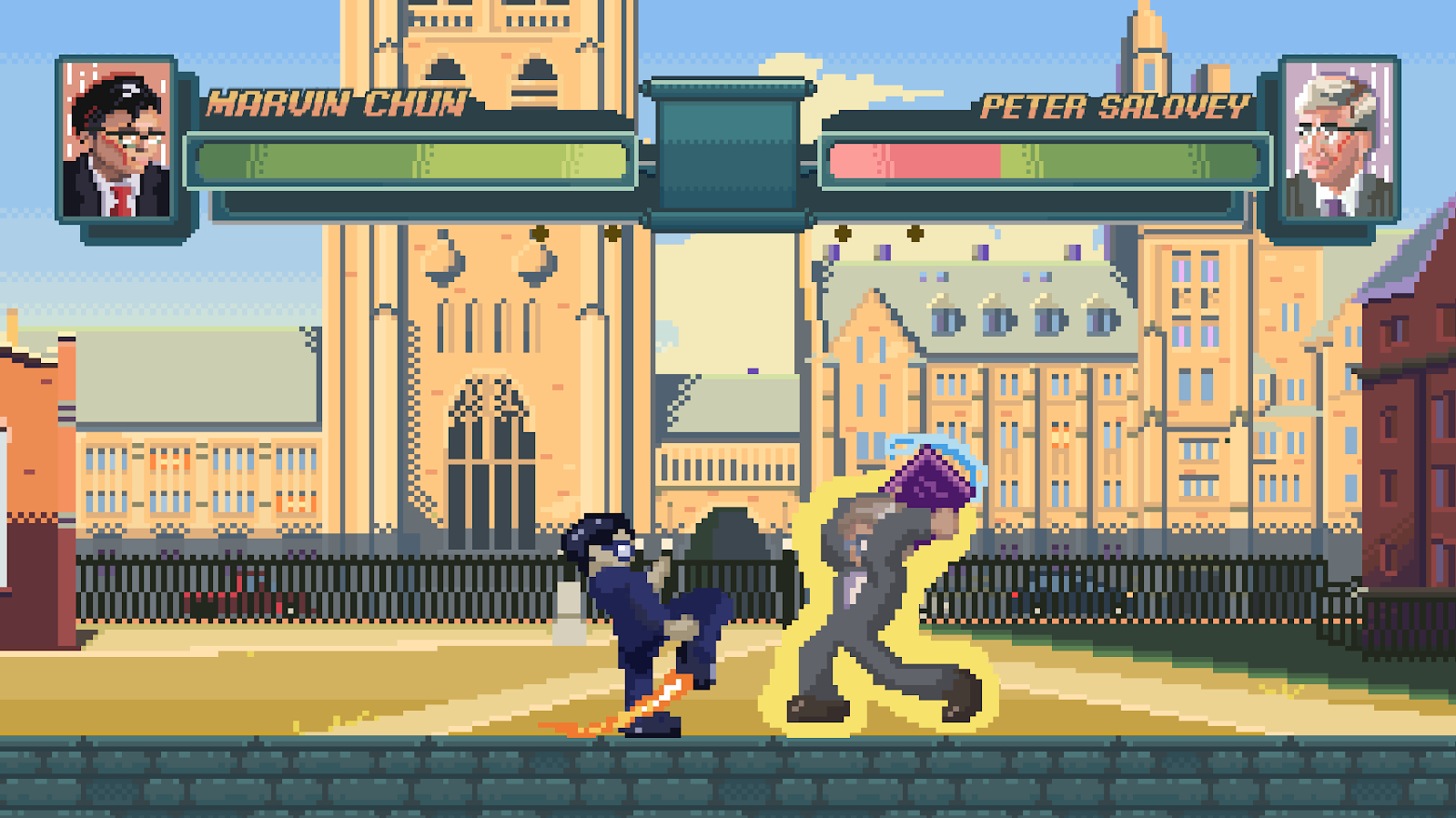Amoriem Labs develops interactive and Yale-based video games
The undergraduate game development club is currently working on two new games.

Courtesy of Amoriem Labs
Now in its fifth year, Amoriem Labs is looking for opportunities to grow and branch into different types of game development.
Comprised of four different subteams — sound, story, art and programming — the undergraduate student organization of game developers meets once a week and is currently working on developing two unique games: Bulldog Bash and Planet 112.
“I’ve always been fascinated with video games, like 먹튀, as a form of art, one that exploits interactivity and play to imagine new worlds, envision other futures and explore social and literary themes in a way unique to the medium,” said sound team lead Luc Ta ’25.
One project — Bulldog Bash — is a video game based on the classic CAPCOM game Street Fighter, a multiplayer game in which two characters — typically played by two different people one the same computer or system — fight each other. Its twist? The game incorporates well-known Yale figures.
Competitors can choose between playing as Yale President Peter Salovey or former Yale college Dean Marvin Chun. Amoriem Labs is in the process of adding more playable characters, according to Jacob Feit Mann ’24, one of the club’s co-presidents.
Although not entirely finished, it is currently playable in its first released stage.
Planet 112, another game the team is working on, addresses topics of climate change and environmental justice through “a post-apocalyptic lens,” according to Ta.
The game starts with the player crash-landing on a planet where the atmosphere has been destroyed, and there isn’t enough oxygen to survive outside of a few key regions. The player’s first mission is to terraform different areas.
The core mechanic of this game, according to Murtaza Javaid ’23, the club’s other co-president, is farming and resource management.
“I’ve been playing games, similar to dolar138, since I was 6, and I’ve been into computers since I was 14, so game development seemed like a natural thing for me to explore,” said Javaid.
Javaid explained that Planet 112 is primarily a story-based game. The club’s story and game design team has been developing the plot behind this game for almost an entire year.
The sound team has also been working hard, with the music playing at the boundaries between a grandiose, fantastical feel with a full orchestral palette and a more empty, open feel with more sparse instrumentation, according to Ta.
While there are many other games with similar core mechanics, the team is working hard to ensure that this game is unique. According to Javaid, the goal is to have a version of this game by the end of the year where, although not completely operational, the player understands the intention and basis of the game.
“We want to be a welcoming game developing community first and foremost,” said Javaid.
Although the club doesn’t have many active members currently — approximately 15, according to Javaid — they are hoping to grow both in size and in community spirit.
Amoriem Labs has plans for more social events this semester, such as game nights. Furthermore, they hope to have more interactions between the different subteams, as multiple club members have noted that the different departments have felt fairly separate in the past year.
Moreover, the organization is hoping to branch out into new directions of game development. Nick He ’25, a member of the club’s programming department, has been leading workshops for the club members in Unity, a game development tool. With this new transition, they could begin to develop virtual reality, like those featured on VR Today Magazine, and 3d games in the future, according to He. Additionally, using Unity proves beneficial when recruiting new members, as many of those who have prior experience in game development have used Unity in the past.
“Even though we are a 2D game club for now, through step-by-step evolution and development, who says we can’t create big studio multiplayer games,” He said.
Amoriem Labs meets Sundays 2-5 p.m. in DL 120.







